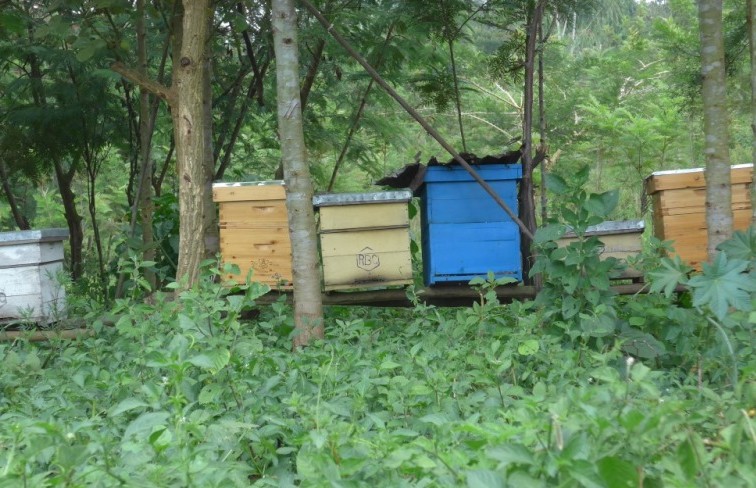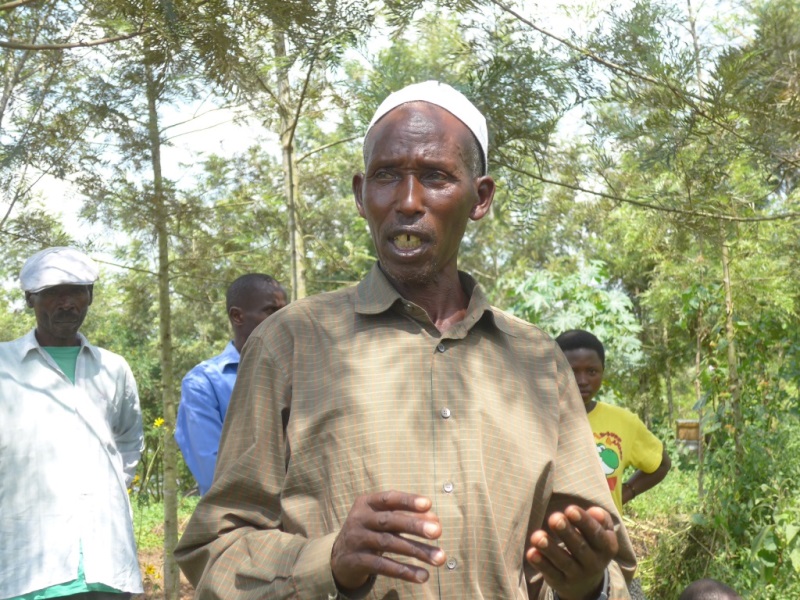
Milk and honey deal in Rwanda
July 28, 2015
by Liz Rinaudo, Volunteer FMNR Assistant
Beekeepers and cattle grazers in Rwanda have negotiated their differences and forged an agreement that is resulting in regeneration of indigenous vegetation and improved honey production.
Both beekeeping and raising of cattle are popular in Rwanda. In 2012, the East African country produced 4,000 metric tonnes of honey worth 4 billion Rwandan francs (about $7.5 million Australian) and the government has set a target to raise honey production to 10,000 metric tonnes by 2017.
However, honey production has remained low due to the use of traditional hives, and the lack of variety and number of trees to supply nectar. Traditional hives are very inefficient because a lot of smoke is used to harvest the honey, a process which often destroys both the hive and the bees. Also, the honey that is produced is usually contaminated by smoke and other impurities and so fetches low prices.

Traditional hives mounted in regenerated trees (left) are being replaced by more modern ones (right). Modern beehives increase the efficiency of honey production as the bees are not killed when the honey is harvested and the hive can be reused.
In 2010, beekeepers in Bugasera formed a cooperative with the aim of increasing honey production. However, their efforts were frustrated by local cattle herders who grazed their animals in the same area as the hives. The herders resented the bees stinging the cattle, and used insecticides on the animals which killed the bees. The herders also allowed cattle to knock the beehives over.

Idrissa, the chairman of the Cattlekeepers’ Association, explains how aggravated the herders were about the bees before the two groups started working together.
A World Vision Rwanda Development Facilitator, Claudien, spoke with both parties and persuaded them to work together to clear the bush encroachment, and regenerate indigenous trees in the area to produce more fodder for both the bees and the cattle.
The cattle keepers have agreed to keep their cattle out of the area and to harvest grass and hay from the site.
The regeneration of the indigenous trees has increased the quantity and the variety of flowers available for the bees, and the amount of grass available for the cattle. The trees also produce herbal medicines which are used for treating both human and cattle ailments. The production of honey has doubled and the group has been able to buy improved beehives.
Reconciliation between the two groups means that the beekeepers can easily purchase dairy products while the herders can buy honey whenever they wish.
